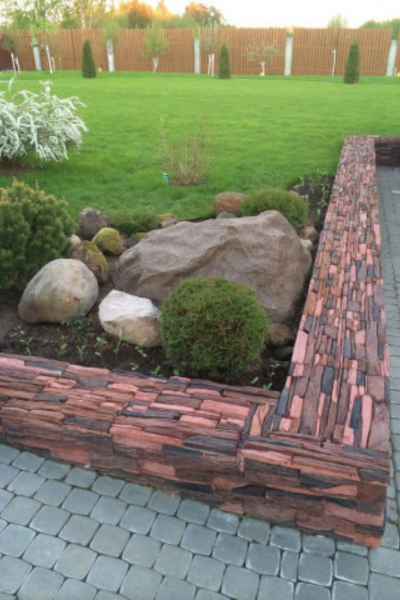 The universal criterion for purchasing any product usually boils down to "like it or not." Guided by intuition, we select clothing, shoes, cars, and much more. This principle is even more applicable when it comes to interior design or landscaping a summer house. Through this process, we surround ourselves with objects that shape our environment and make life more comfortable, pleasant, and harmonious. Artificial decorative boulders are no exception. Like garden furniture, they add beauty and order to our surroundings, transforming the existing landscape into something more refined and aligned with our aesthetic ideals.
The universal criterion for purchasing any product usually boils down to "like it or not." Guided by intuition, we select clothing, shoes, cars, and much more. This principle is even more applicable when it comes to interior design or landscaping a summer house. Through this process, we surround ourselves with objects that shape our environment and make life more comfortable, pleasant, and harmonious. Artificial decorative boulders are no exception. Like garden furniture, they add beauty and order to our surroundings, transforming the existing landscape into something more refined and aligned with our aesthetic ideals.
You can browse the catalog and place an order for an artificial garden stone on our website.
Functional and Aesthetic Benefits
In addition to their decorative function, hollow boulders serve a practical role—protecting engineering features on the property from rain, wind, and frost. Therefore, the primary factor in choosing a decorative hollow boulder is not its appearance—though that is also important—but its size. Specifically, the internal cavity must be large enough to cover the object it is meant to conceal, such as a septic tank lid, gas tank neck, well cover, or pump equipment.
Sizing Considerations
To select the right boulder, measure the diameter of the object you want to cover, or its diagonal in the case of a rectangular shape. These measurements determine the maximum horizontal dimension required. Another crucial measurement is the height from the ground. Precision is key, as even a few extra centimeters of height can significantly affect the required dimensions of the internal cavity and, consequently, the boulder’s price.
The most reliable method for selecting the correct size is to photograph the object alongside a measuring tape showing the dimensions. This image helps avoid errors and provides the seller or consultant with a clear idea of what needs to be covered. You can send this photo with measurements to us via WhatsApp, email, or any other convenient method. Our consultant will guide you in choosing a boulder that fits your needs.
Aesthetic Factors
The second factor in choosing a boulder is its aesthetic appeal—color, texture, and overall shape. Most popular sizes of artificial hollow boulders are available in various shapes, including low, ground-hugging forms, tall, pointed ones, and medium-height options. The heights of these artificial stone covers range from 10–15 cm to 40–45 cm, with some models reaching up to a meter in height.
The texture also plays a significant role. While artificial stones used indoors often have smooth, polished surfaces (e.g., countertops, windowsills, and fireplace mantels), landscaping allows for bolder choices. Rough, natural forms with chips and uneven surfaces enhance the natural feel of the landscape, restoring its charm after construction or utility work.
Choosing the Right Color
Another key factor is the color of the boulder. Nature offers stones in a wide range of colors and shades, often with contrasting streaks or patterns. Despite this diversity, people tend to prefer more traditional options when choosing stones for their landscapes.
This preference likely stems from the intrinsic connection between color and texture. For instance, stones resembling granite intuitively "belong" to gray or pinkish hues, as seen in nature. Forced combinations, such as pairing a granite-like texture with a marble-like color, can feel unnatural and even jarring, emphasizing the artificial nature of the stone.
Finding Harmony in Color and Texture
While there is room for personal preference, the alignment of color and texture is a decisive factor. Even within the two main palettes—pinkish and grayish tones—there are countless variations. Additional visual interest comes from specks of white or black within the main color. Unlike size or shape, choosing a color is more subjective, as each artificial boulder is uniquely tinted by applying natural stone chips by hand.
A good starting point is to decide on a general tone—red or gray—and then choose a specific boulder that appeals to you within that range. The surrounding environment—such as walkways, foundations, or natural stones—might influence your decision. However, in most cases, a boulder of any color will work well if its texture matches. A reddish-brown boulder can look stunning among gray natural stones, while a gray boulder can create a harmonious contrast on a site with red-toned paving stones.
By considering size, shape, texture, and color, you can select an artificial decorative boulder that not only fulfills its practical purpose but also enhances the beauty and harmony of your outdoor space.
